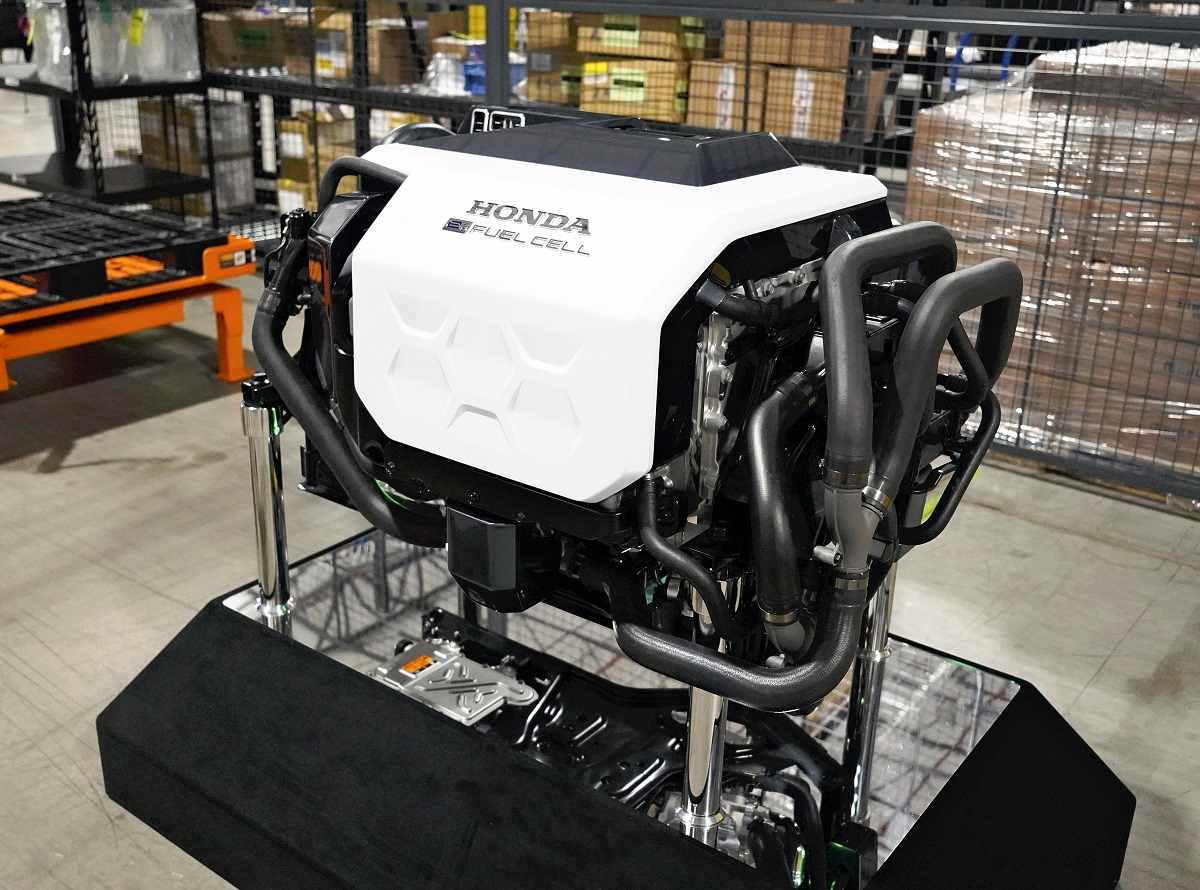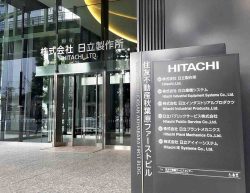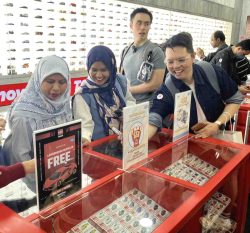
A fuel cell to be mass produced by Honda Motor and General Motors in Michigan on Jan. 24
21:00 JST, January 29, 2024
DETROIT — Honda Motor Co. announced that they began joint mass production of hydrogen fuel cells with General Motors and plan to sell vehicles equipped with the system both in Japan and in the United States.
The automakers aim to lower the price of fuel cell vehicles (FCVs) they plan to sell in the first half of 2024 by reducing production costs.
Honda unveiled to the press their joint venture plant with GM near Detroit on Jan. 24.
The new fuel cell system measures about one meter wide and 70 centimeters deep.
They will soon begin mass production of the CR-V, a sport utility vehicle equipped with the fuel cells at a plant in Ohio. The production cost was reduced to one-third of the previous model by reducing the use of expensive platinum.
With improved performance at low temperatures, the car can apparently run without problems even at minus 30 C.
Honda expects to produce roughly 2,000 of the fuel cells annually. Tetsuo Suzuki, vice president of the joint venture, said, “We are prepared for mass production in the coming hydrogen age.”
The plug-in type FCV can be recharged from a household power source. Honda is considering a lower price than Toyota Motor Corp.’s FCV Mirai, which sells for about ¥8 million.
Fuel cell technology uses electricity generated from a motor powered by a hydrogen supply and in-air oxygen. FCVs are lauded as the “ultimate eco-car” because they emit only water while driving. It takes only about three minutes to replenish hydrogen in an FCV.
Electric vehicles on the other hand often take more than 30 minutes to charge and are vulnerable to cold weather — many EVs in the United States were rendered inoperable during a cold snap mid-January.
Honda plans to have all their new vehicles sold worldwide be EVs and FCVs by 2040 and will be the first automaker to mass-produce FCVs in the United States.
However, according to research firm JATO, the number of FCVs sold in the United States in 2023 stalled at only about 3,000 units. Sales in Japan between January to November only amounted to about 300 units. FCVs sales in Japan and the United States together accounted for less than 1% of the sales of EVs. On top of this, there were only 160 hydrogen stations in Japan as of 2023.
Clarity, a FCV launched by Honda in 2016, saw sluggish sales due to its high price of just under ¥8 million and lack of hydrogen stations. Honda stopped production of Clarity in 2021.
The key to how widely FCVs get adopted will likely be the extent to which vehicle prices continue to fall, and infrastructure for the technology continues to improve.
"Business" POPULAR ARTICLE
-

Keidanren Chairman Yoshinobu Tsutsui Visits Kashiwazaki-Kariwa Nuclear Power Plant; Inspects New Emergency Safety System
-

Tokyo Economic Security Forum to Hold Inaugural Meeting Amid Tense Global Environment
-

Imports of Rare Earths from China Facing Delays, May Be Caused by Deterioration of Japan-China Relations
-

University of Tokyo Professor Discusses Japanese Economic Security in Interview Ahead of Forum
-

Japan Pulls out of Vietnam Nuclear Project, Complicating Hanoi’s Power Plans
JN ACCESS RANKING
-

Keidanren Chairman Yoshinobu Tsutsui Visits Kashiwazaki-Kariwa Nuclear Power Plant; Inspects New Emergency Safety System
-

Tokyo Economic Security Forum to Hold Inaugural Meeting Amid Tense Global Environment
-

Imports of Rare Earths from China Facing Delays, May Be Caused by Deterioration of Japan-China Relations
-

University of Tokyo Professor Discusses Japanese Economic Security in Interview Ahead of Forum
-

Japan Pulls out of Vietnam Nuclear Project, Complicating Hanoi’s Power Plans

























